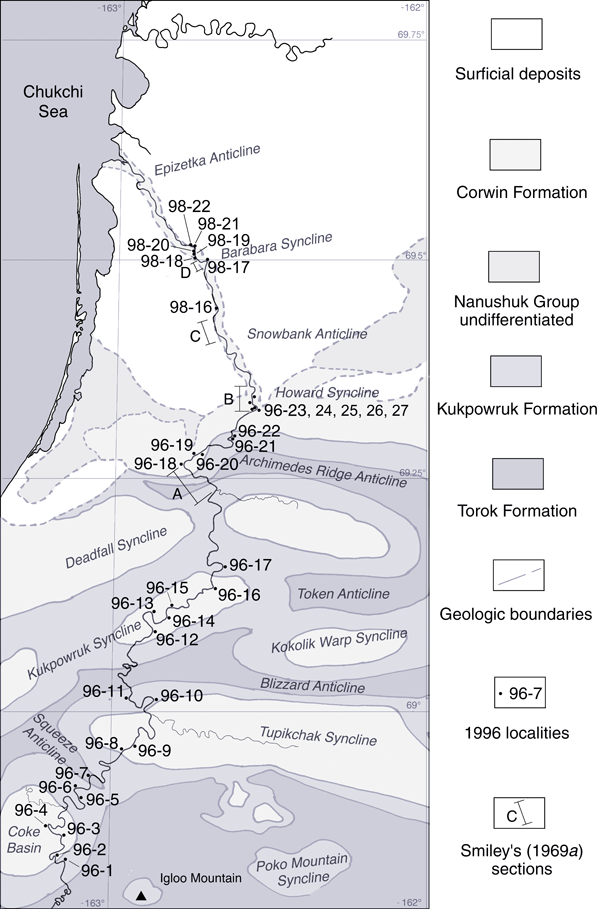Locality 96-8: 68° 56' 34" N 162° 58' 36" W
Corwin Formation
Specimen: 96 RAS 26
Description.The outcrop consists of a basal sandstone body several metres thick overlain by carbonaceous clay-dominated mudstone with abundant Pityophyllum leaves. This coarsens upwards to a yellow weathering gray nodular and rippled siltstone and interbedded fine silts/clays with abundant Equisetites rhizomes with large nodules, small Ginkgo leaves, rare Birisia alata and abundant Pityophyllum nordeskioldii and P. staratschinii. Podozamites is very rare with only one possible fragment found. These siltstones are overlain by thick cross bedded channel sands at the base of which are clay rip-up clasts. The sands exhibit load structures and flutes and near the base occasional well rounded chert pebbles (longest axis 1 - 2 cm). Plant material is rare in the sands except for some Ginkgo leaves and tree trunks and branch wood. Most leaf material is highly fragmented. Marine fossils are absent.
Interpretation. Carbonaceous mudstones are interpreted to represent quiet water lacustrine and/or backswamp conditions some distance from the channel margins. Pityophyllum dominated the vegetation.
The main plant-bearing sands represent crevasse splay deposits and overbank facies. Both mature and successional vegetation is represented.
The sands represent filled river channels.
|

